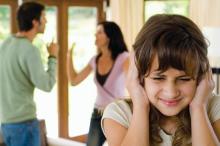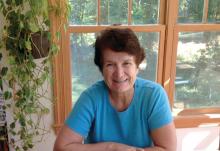Life is full of traumas, large and small. You know this for yourself as well as for the families and children under your care. The American Academy of Pediatrics provides screening tools for trauma, also called adverse childhood experiences (ACEs). But with 68% of children exposed to a traumatic event before the age of 16 years (Arch Gen Psychiatry. 2007 May; 64[5]:577-84), what is it we should do if we find it?
Smaller traumas, such as a power outage, may frighten but be growth promoting for most children – so called “eustress” – as they see adults bring out flashlights and serve tuna from a can and learn that one can cope with scary, unfamiliar situations. Even with smaller threats some children may have intense fear, especially those already anxiety prone or with developmental differences such as autism or sensory processing disorders.
I suggest that our role when we uncover trauma is to determine if there is current danger (and take action), or if the past trauma is affecting the child’s or parent’s functioning or producing distress. Most people recover from trauma with support from family or community but without formal help.
But we can’t assume a child will recover without help as individual, family, cultural, and historical factors affect a person’s response. Someone with an anxiety disorder, or a victim of war or assault may react disproportionately to even small events. A parent with such sensitizing factors may model poor coping, increase the child’s fear, and fail to provide the support that could buffer development of sequelae. We need to check.
Larger traumas that a child is exposed to or learns about, which threatened or resulted in death or injury – such as a destructive tornado – or sexual violence can produce lasting effects, and 25%-69% develop posttraumatic stress disorder (PTSD). For preschoolers, car crashes, dog bites, and medical procedures can also be causative. To be diagnosed with PTSD, a combination and number of symptoms must appear as a result of the trauma, including: re-experiencing the event (1); avoidance of things that remind one of the event (1); arousal or reactivity (2); and negative change in thoughts or feelings (2).
“PTSD in preschool children” (DMS-5) requires 0 re-experiencing, and only 1 avoidance or negative thoughts/feelings symptom as it is harder to discern at this age. The jumpiness of reactivity can disrupt activities and often sleep. The cognitive changes can include forgetting details about the event, decline in ability to pay attention or do school work, or distorted or negative thoughts such as feeling blame. Besides anxiety or depression, mood changes can include dulled emotions or social withdrawal. These symptoms are important for us to recognize.
To be diagnosed, PTSD symptoms must impair functioning and last more than 1 month. So why are families not telling us? While symptoms usually appear within 3 months, it may be months or even years, especially for early traumas such as sexual abuse as the child cannot put the experience into context until later when sexuality becomes relevant. This delay in onset is one reason parents may not report a trauma when complaining about a behavior change. When the trauma also affected them, common in both natural disasters and psychosocial events such as partner violence, the parent may have the related forgetting or depression focusing them on their own pain rather than their child’s pain. These are important reasons to ask about possible traumas of child and parent, giving examples, when a child presents with a behavior, emotional, learning, or somatic complaint.
Children under age 6 years often respond to trauma by regressing, such as wetting the bed, losing speech or a recent milestone, or clinginess. They also may reenact the event repeatedly in play. These are important symptoms to know because parents may think it is just a phase, or may be punishing or irritable with the child about these “failures.”
Older children who experienced trauma, especially boys, may “act out,” becoming aggressive, destructive, or disrespectful, bringing on correction instead of support. They may feel guilty or ashamed about the event but feel and act revengeful. When children show such externalizing behaviors, it is especially important to ask about possible traumas because the child is reacting to feeling unsafe and angry about not being protected, and use of behavior modification interventions that do not address the trauma are inadequate.
Trauma can have serious long-term toxic stress effects even without meeting criteria for PTSD. These effects are evident in physiological changes in the hypothalamic pituitary adrenal (HPA) axis with disordered stress response and changes in brain structures, neurotransmitters, and telomeres. It makes sense that more severe and longer-lasting effects come from complex trauma, defined as “multiple, chronic, and prolonged, developmentally adverse traumatic events, most often of an interpersonal nature ... and early-life onset,” than from single events. Children exposed to such repeated traumas were not protected by their parents who may even be the perpetrators or themselves incapacitated by partner violence, substance use, or severe mental illness. Complex traumas often include physical, sexual, or emotional abuse or neglect. These “relational” traumas distort the basic functions normally developed by nurturing parent-child interaction and result in deficits in attachment, emotion and behavior regulation and self-concept. Beside anxiety or depression, prolonged stress may even generate deficits in memory, learning, or attention, or cause cognitive dissociation; reasons we also need to ask about trauma when evaluating for these problems.
Some types of trauma elicit more specific symptoms. Sexual abuse can stimulate sexual acting out, excessive or inappropriate touching, promiscuity, or eating disorders. Neglect can result in gorging or food hoarding and cause a child to be socially indiscriminate, sitting on our laps, or asking to go home with us.
Traumatized children, as adolescents, are at risk for coping with this pain by cutting, or abusing substances or alcohol (other signs suggesting trauma). These harmful strategies contribute to the adult morbidity now recognized from Adverse Childhood Experiences. Fortunately, we can refer to effective parent-child therapies, such as Circle of Security and play therapy for children less than 3 years old, trauma-focused cognitive behavioral therapy for those over 3 years, and even video training such as trust-based relational intervention, as well as monitor well-being.
Dr. Howard is assistant professor of pediatrics at Johns Hopkins University, Baltimore, and creator of CHADIS (www.CHADIS.com). She had no other relevant disclosures. Dr. Howard’s contribution to this publication was as a paid expert to MDedge News. E-mail her at pdnews@mdedge.com.



